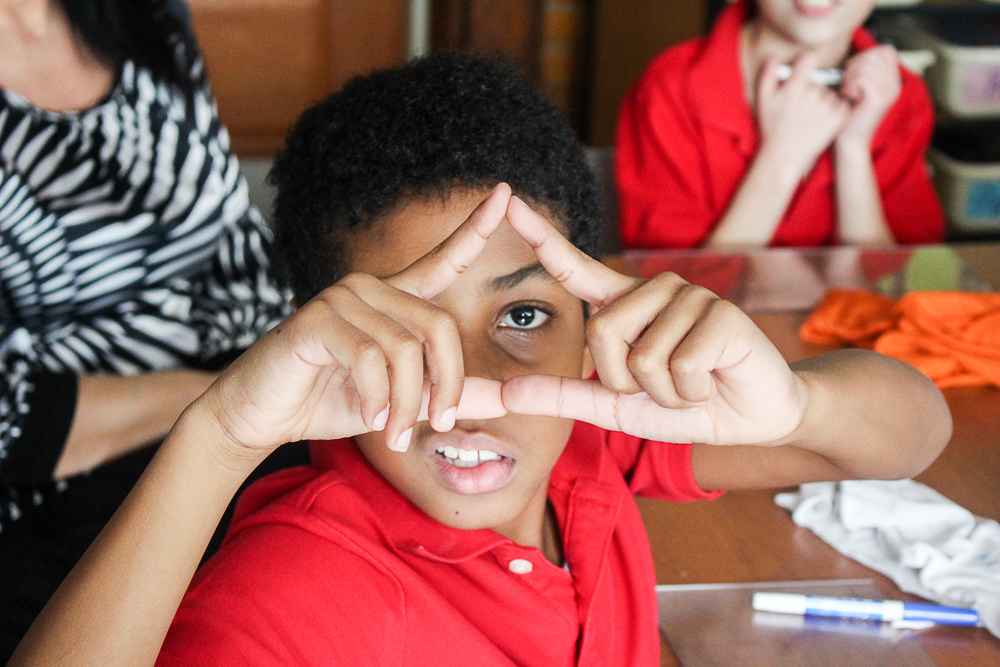The school year has begun. Backpacks are full of books, lunches are packed, students are running to catch the bus, and, nationwide, it’s Arts in Education Week. Not just “arts education” but arts IN education. Because the arts do so much more when they are infused throughout the curriculum.
Arts in Education Week reminds us that the arts inspire deep and even joyful learning. They make learning fun and memorable by integrating movement, music, visual arts and theater into often complex academic topics in science, math, English language arts and social studies.
Think about it. Are you more likely to remember a new vocabulary word by acting out its meaning or by memorizing a printed definition? And remember when you had to study exponents? Wouldn’t it have been a lot more gratifying – and meaningful – to use those exponents to create rap rhythms?
Bringing the arts into “core” instruction makes connections that spark exciting “Aha!” moments in young, ever-expanding minds. I’ll never forget seeing a middle schooler suddenly – finally – grasp the mathematical concept of one-eighth when he colored it in on graph paper with a teaching artist. He was so proud! Drawing, moving, singing and using puppets make the school day more engaging, and learning more personal. Arts strategies also reach students whose learning style is more visual or hands-on, as well as students who might yet not have the English words to participate fully in the classroom.
Further, involving children in the arts is an effective way to teach concrete life skills. Children immersed in the arts learn that there is more than one way to approach a problem or interpret a situation, that practice makes perfect (or at least better), that by working together they can achieve more than they can on their own, that patience with yourself and others is important, and that even small changes can have huge effects.
Quite simply, there is greater merit than “art for art’s sake” in having kids puzzle out the meaning of a painting, sing in a chorus, or say the same words using different facial expressions or tones of voice.
Students at every school in every town deserve access to the arts from several different sources each year. Certified arts teachers who students see every week are critically important in developing artistic skills that are both beneficial in themselves and that transfer to other learning. Community teaching artists who visit classrooms expose students – and their teachers – to activities that enhance learning and foster ideas about career options or pleasurable pursuits that can last a lifetime. And visits to regional theaters, museums, performance spaces and historic homes connect young people to important community assets and resources.
As an organization that takes thousands of Hartford elementary students to venues such as the Mark Twain House and Museum, Playhouse on Park, and the Wadsworth Atheneum each year, we continually hear from teachers that these often-first-time experiences open whole new worlds for their students.
Just as important – particularly at a time when chronic absenteeism is such a serious challenge threatening children’s long-term prospects for success – the arts are motivators for many kids to come to school. For some students, the sanctuary of the art room or a Salsa workshop with a neighborhood teaching artist is what gets them on the bus in the morning. It’s where they can express themselves most authentically and productively, and take pride in what they create. It’s where they are validated by adults and peers.
This Arts in Education Week, let’s acknowledge that the arts are not just nice to have in our schools. They’re necessary. The arts are vital to a balanced, complete and enriching education for all students. And our hats are off to all of the community teaching artists, certified arts teachers, and creative classroom teachers who use engaging art strategies that inspire their young students to shine.
Rie Poirier-Campbell is Executive Director of Hartford Performs which brings arts-integrated learning to more than 10,000 PreK-8 students in 30+ schools in Hartford and the region.

